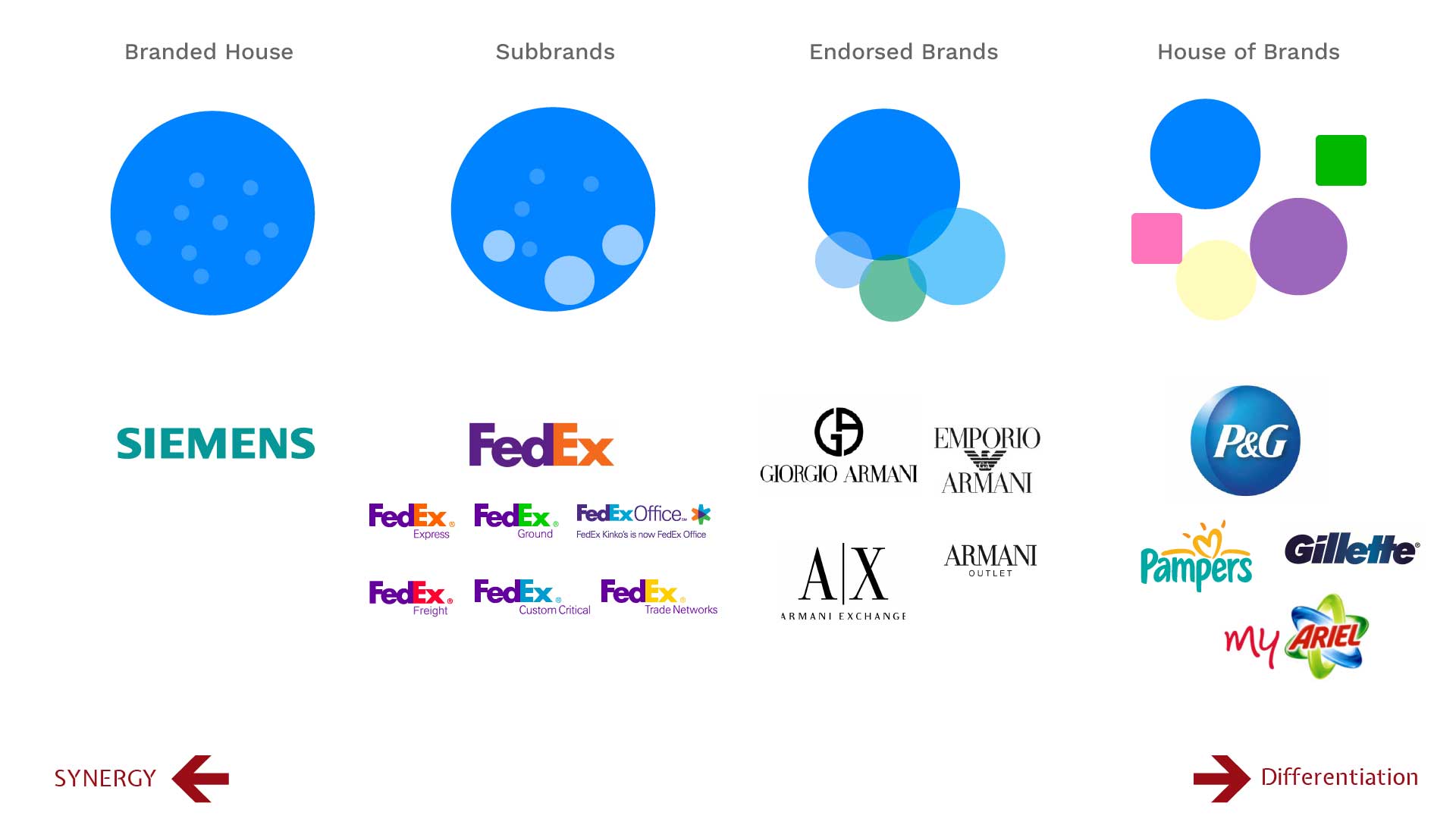Brand Architecture
If a company was a building.

The fitting brand system

Brand architecture is the structure of brands within an organizational unit. It is the way in which the brands within an organization’s portfolio are related to and differentiated from each other.
Brand architecture provides clients with an effective strategy for managing their brands in a competitive marketplace.
Types of Brand Architecture
A brand can leverage the trust built by its larger brand or company while entering new markets that are easier to enter because of a stronger sense of brand loyalty. When sub-brands are used in marketing, the results are more powerful. Key product features can be highlighted and focused on when messaging is more targeted. Product options become clearer based on the customer’s needs, making their choice and conversion journey as easy as possible.
The best type of brand architecture for a company depends on a number of factors, including the company’s size, industry, and target market. However, all of these types of brand architecture can be effective if implemented correctly. Here are 5 main types of brand architecture you should know about:
Branded House
In a branded house architecture, the parent brand is dominant and all sub-brands are closely aligned with it. This type of architecture is often used by companies that want to create a strong brand identity and a sense of consistency across all of their products and services. Examples of companies that use a branded house architecture include Apple, Siemens, and Samsung.
Subbrands
A sub-brand is a brand that is part of a larger brand or parent brand. Sub-brands are often created to target specific market segments or to offer new products or services that are different from the parent brand. These sub-brands are all part of the Virgin brand, but have their own unique identities and target different market segments.
Endorsed Brands
In an endorsed brand architecture, the parent brand endorses the sub-brand, but the sub-brand has its own distinct identity. This type of architecture is often used by companies that want to leverage the equity of the parent brand to launch new products or enter new markets. Examples of companies that use an endorsed brand architecture include Coca-Cola, Disney, and Marriott.
House of Brands
In a house of brands architecture, each sub-brand is independent and has its own distinct identity. This type of architecture is often used by companies that want to target different market segments with different brands. Examples of companies that use a house of brands architecture include Procter & Gamble, Unilever, and Johnson & Johnson.
Hybrid Branding
A hybrid brand is a type of brand architecture that combines elements of different schemes. This type of architecture is often used by companies that want to leverage the strengths of several approaches.
Benefits of a well designed brand architecture
Lowered marketing costs
A well-designed brand architecture can significantly reduce your organization’s marketing spend by eliminating the need to launch multiple brands simultaneously.
Increased flexibility for future product and service expansions
Creating a strong foundation from the start ensures that you have room to grow in the future without having to change everything all at once (or risk losing momentum).
Strong stakeholder confidence in the strategic direction of your brand(s)
By clearly communicating what makes each part of your business different, you build trust with customers, investors, and other stakeholders who are essential to your success; they understand why each decision has been made and have confidence that those decisions will continue to move forward, whether they agree with them or not.


